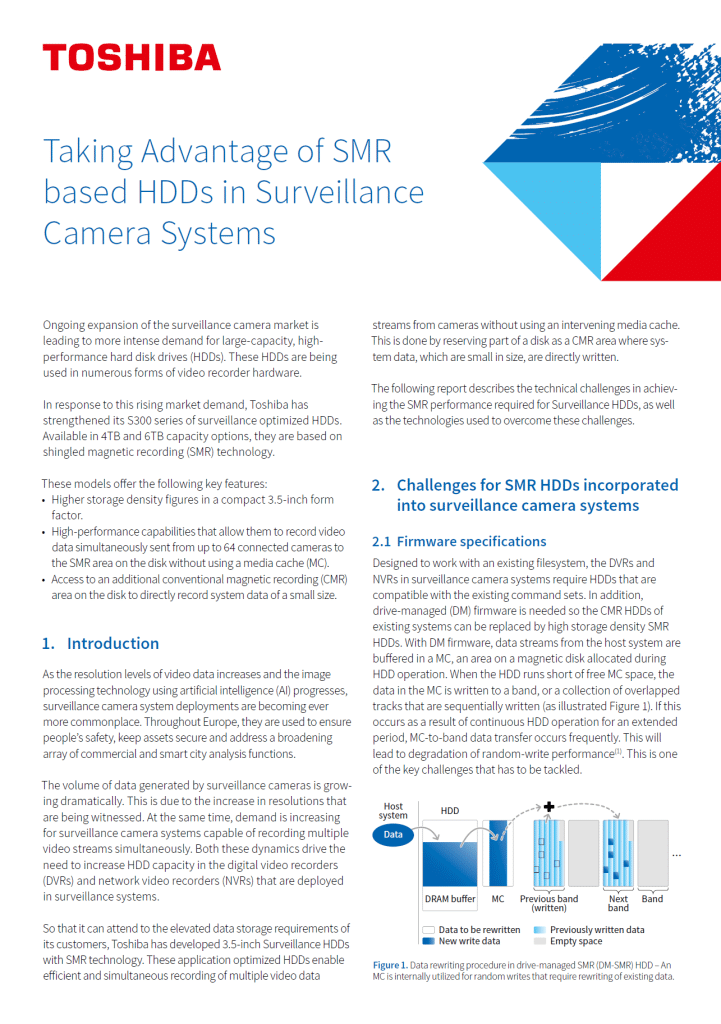Taking Advantage of SMR based HDDs in Surveillance Camera Systems
Ongoing expansion of the surveillance camera market is leading to more intense demand for large-capacity, highperformance hard disk drives (HDDs). These HDDs are being used in numerous forms of video recorder hardware.
In response to this rising market demand, Toshiba has strengthened its S300 series of surveillance optimized HDDs. Available in 4TB and 6TB capacity options, they are based on shingled magnetic recording (SMR) technology. These models offer the following key features:
• Higher storage density figures in a compact 3.5-inch form factor.
• High-performance capabilities that allow them to record video data simultaneously sent from up to 64 connected cameras to the SMR area on the disk without using a media cache (MC).
• Access to an additional conventional magnetic recording (CMR) area on the disk to directly record system data of a small size.
1. Introduction
As the resolution levels of video data increases and the image processing technology using artificial intelligence (AI) progresses, surveillance camera system deployments are becoming ever more commonplace. Throughout Europe, they are used to ensure people’s safety, keep assets secure and address a broadening array of commercial and smart city analysis functions.
The volume of data generated by surveillance cameras is growing dramatically. This is due to the increase in resolutions that are being witnessed. At the same time, demand is increasing for surveillance camera systems capable of recording multiple video streams simultaneously. Both these dynamics drive the need to increase HDD capacity in the digital video recorders (DVRs) and network video recorders (NVRs) that are deployed in surveillance systems.
So that it can attend to the elevated data storage requirements of its customers, Toshiba has developed 3.5-inch Surveillance HDDs with SMR technology. These application optimized HDDs enable efficient and simultaneous recording of multiple video data streams from cameras without using an intervening media cache. This is done by reserving part of a disk as a CMR area where system data, which are small in size, are directly written.
The following report describes the technical challenges in achieving the SMR performance required for Surveillance HDDs, as well as the technologies used to overcome these challenges.
Download the whole article here.

